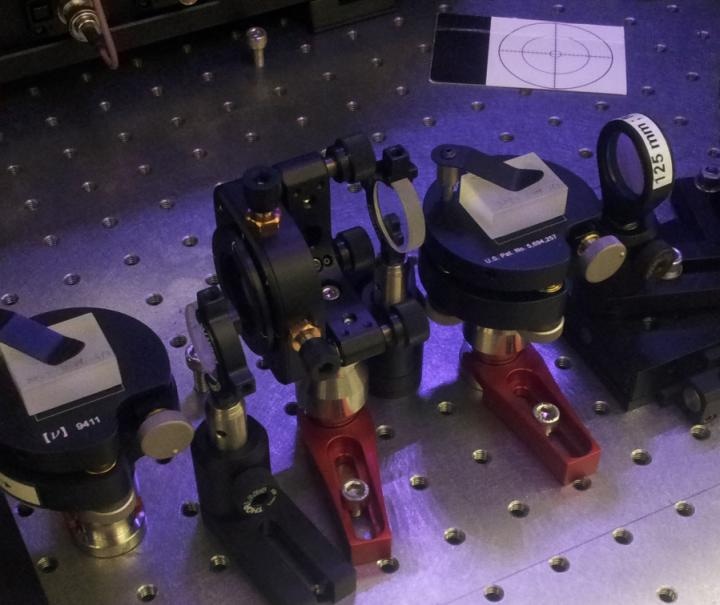May 22 2018
A team of scientists from the UK and Australia have made an important progress towards understanding the boundary between the quantum realm and everyday classical world.
 The first quantum drum test. (Image credit: Imperial College London)
The first quantum drum test. (Image credit: Imperial College London)
Quantum mechanics is actually strange. Objects can act like both waves and particles and can be both here and there simultaneously, challenging one’s common sense. Such counterintuitive behavior is usually limited to the microscopic territory and the question “why don’t we see such behavior in everyday objects?” challenges many researchers at present.
Now, a team of scientists have come up with a new method to produce this type of quantum behavior in the motion of a miniature drum just visible to the naked eye. The details of their research are reported in the May 21 issue of the New Journal of Physics.
Project chief investigator, Dr. Michael Vanner from the Quantum Measurement Lab at Imperial College London, said: “Such systems offer significant potential for the development of powerful new quantum-enhanced technologies, such as ultra-precise sensors, and new types of transducers.
“Excitingly, this research direction will also enable us to test the fundamental limits of quantum mechanics by observing how quantum superpositions behave at a large scale.”
Special Kind of Drumstick
Mechanical vibrations, such as those that generate the sound from a drum, are a vital part of everyday experience. Hitting a drum with a drumstick causes it to briskly move up and down, creating the sound one hears.
In the quantum realm, a drum can vibrate and be idle all at once. However, creating such quantum motion is extremely challenging. Lead author of the project Dr. Martin Ringbauer from the University of Queensland node of the Australian Research Council Centre for Engineered Quantum Systems, said: “You need a special kind of drumstick to make such a quantum vibration with our tiny drum.”
Of late, the emerging field of quantum optomechanics has made significant progress towards the goal of a quantum drum with laser light as a type of drumstick. However, a number of challenges remain, so the authors’ current research takes a non-traditional approach.
We adapted a trick from optical quantum computing to help us play the quantum drum. We used a measurement with single particles of light - photons - to tailor the properties of the drumstick.
This provides a promising route to making a mechanical version of Schrodinger’s cat, where the drum vibrates and stands still at the same time.
Dr. Martin Ringbauer, Lead Author
Towards Quantum Gravity
These experiments have made the primary observation of mechanical interferences fringes, which is a critical progress for the field.
In the experiment, the fringes were at a classical level because of thermal noise but driven by this success, the scientists are currently working hard to enhance their method and work the experiments at temperatures near absolute zero where quantum mechanics is predicted to dominate.
These future experiments may disclose new details of quantum mechanics and may even help provide insight into a theory that connects the quantum realm and the physics of gravity.